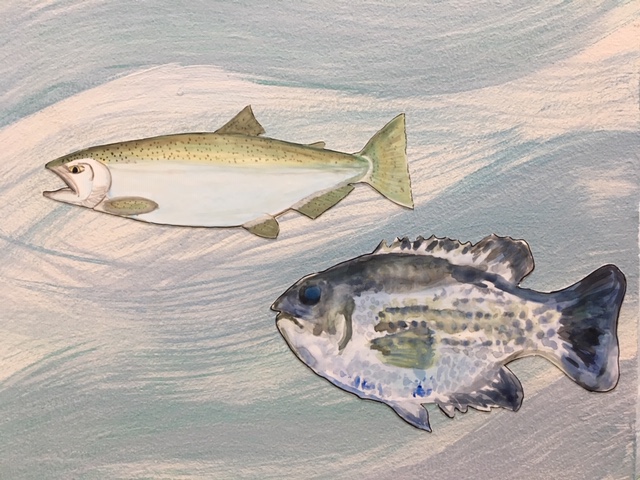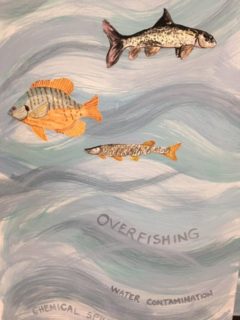
OISE EcoArt Installation 2019 – detail 
OISE EcoArt Installation 2019- detail
What watershed do you live in? Even though everyone relies on a watershed to ensure our survival, most wouldn’t know how to answer this question. This led to our focus this year on the Great Lakes for our annual eco-art installation at OISE. Framed by an introduction to Ecojustice Education, we aimed to raise awareness of the equity of all living beings in discussions of environmental sustainability, especially ones that remain well-hidden, like fish and other aquatic forms of life. We explored the environmental challenges faced by the lakes and their inhabitants – climate change, loss of habitat, pollution, micro plastics, invasive species, and overfishing are just a few. Despite living in a city that sits on the edge of Lake Ontario, most of us were hard-pressed to name even one fish species in the lake or nearby rivers. So we studied and painted images of fish in the Great Lakes for the installation, which introduced us to species like Rainbow Darter, Rockbass, Northern Redbelly Dace, Atlantic Salmon, Brook Trout, and Yellow Perch. The damage inflicted by humans on these species, as well as others who live in and on the lake, is broad; the ecojustice movement reminds us that injustice spans across locations, species and generations. As part of the creative process we also identified actions we can take in our own lives to lessen the challenges faced by the fish; we can minimize our use of pollutants and plastics; reduce runoff from our yards; and help our students learn about the watersheds they live in through science, math, social studies, and of course, eco-art!

OISE EcoArt Installation 2019 
OISE EcoArt Installation 2019 – detail


